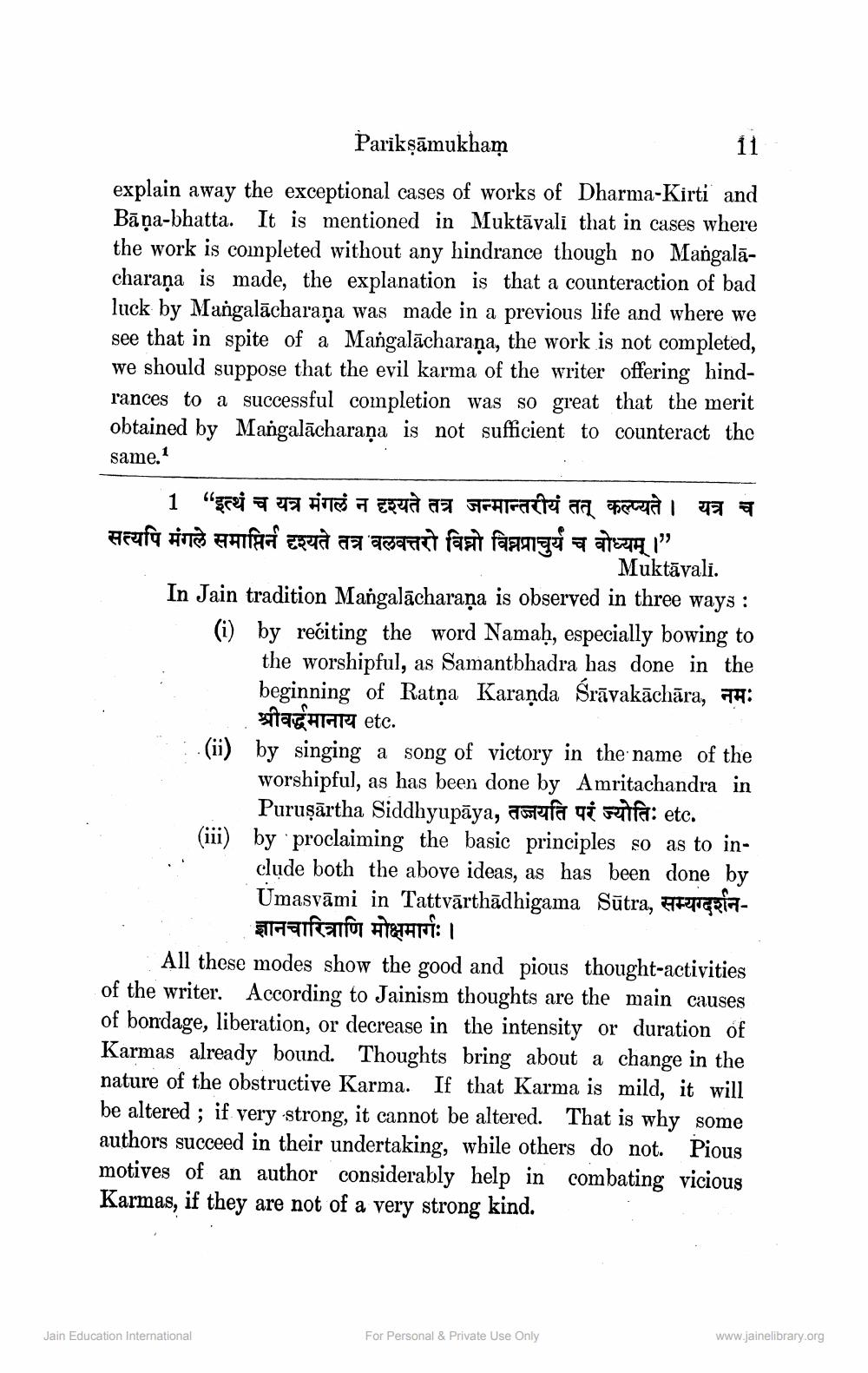________________
il
Parikşāmukham explain away the exceptional cases of works of Dharma-Kirti and Bāņa-bhatta. It is mentioned in Muktāvali that in cases where the work is completed without any hindrance though no Mangalācharaṇa is made, the explanation is that a counteraction of bad luck by Mangalācharaṇa was made in a previous life and where we see that in spite of a Mangalācharaṇa, the work is not completed, we should suppose that the evil karma of the writer offering hindrances to a successful completion was so great that the merit obtained by Mangalācharaṇa is not sufficient to counteract the same. 1
____ 1 "इत्थं च यत्र मंगलं न दृश्यते तत्र जन्मान्तरीयं तत् कल्प्यते । यत्र च सत्यपि मंगले समाप्तिर्न दृश्यते तत्र वलवत्तरो विघ्नो विघ्नप्राचुर्य च वोध्यम् ।”
Muktāvali. In Jain tradition Mangalācharaṇa is observed in three ways : (i) by rećiting the word Namaḥ, especially bowing to
the worshipful, as Samantbhadra has done in the beginning of Ratņa Karaņda Srāvakāchāra, A: श्रीवर्द्धमानाय etc. by singing a song of victory in the name of the worshipful, as has been done by Amritachandra in Puruşārtha Siddhyupāya, dostala ni sifa: etc. by proclaiming the basic principles so as to include both the above ideas, as has been done by Umasvāmi in Tattvārthādhigama Sutra, सम्यग्दर्शन
ज्ञानचारित्राणि मोक्षमार्गः। All these modes show the good and pious thought-activities of the writer. According to Jainism thoughts are the main causes of bondage, liberation, or decrease in the intensity or duration of Karmas already bound. Thoughts bring about a change in the nature of the obstructive Karma. If that Karma is mild, it will be altered ; if very-strong, it cannot be altered. That is why some authors succeed in their undertaking, while others do not. Pious motives of an author considerably help in combating vicious Karmas, if they are not of a very strong kind.
Jain Education International
www.jainelibrary.org
For Personal & Private Use Only




